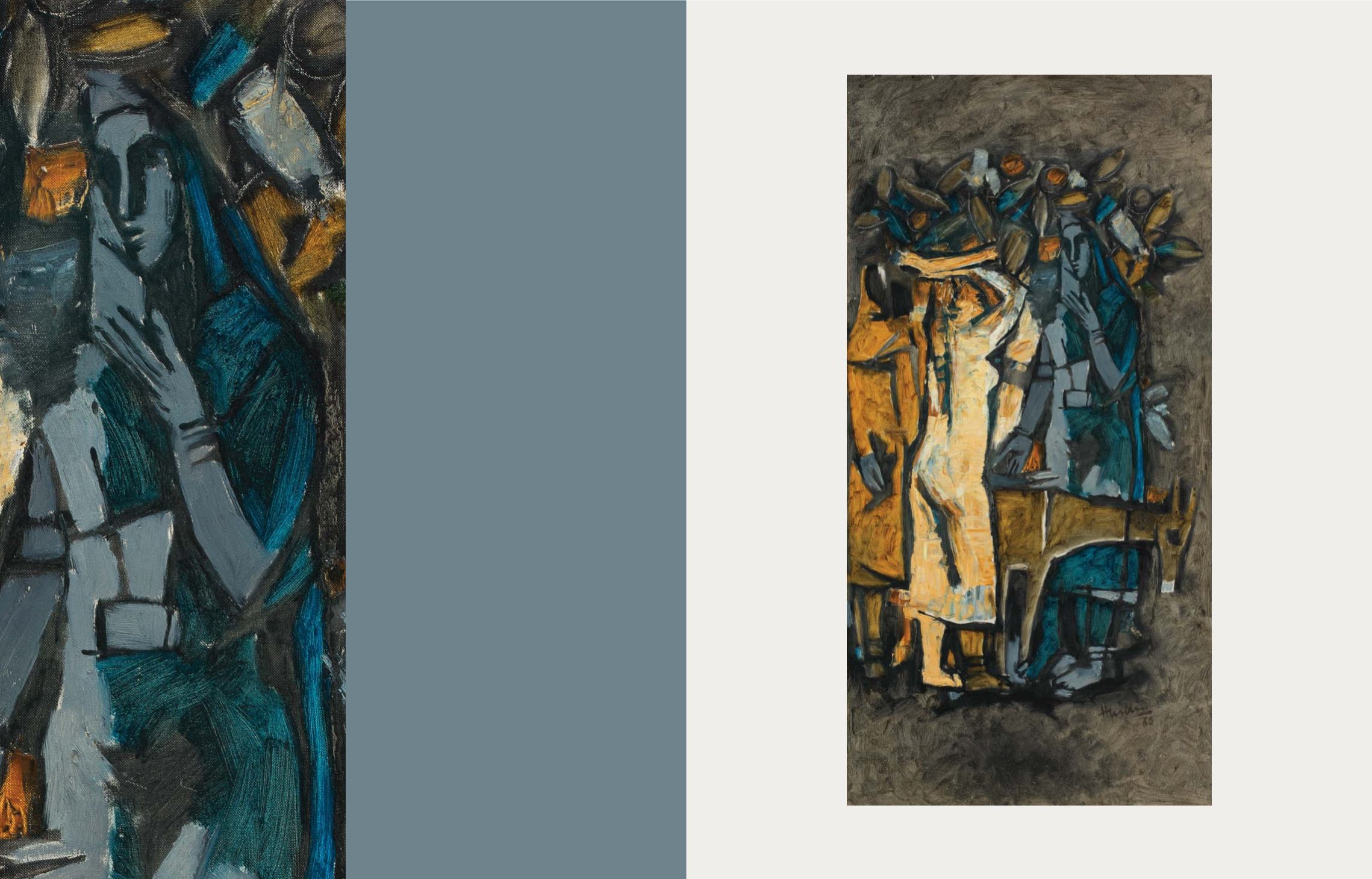

100
101
Husain often painted groups of women in
rural settings. This grouping is described
by critic Shiv S Kapur, as the subjects being
“withina communityof loneliness.” (Richard
Bartholomew and Shiv S Kapur,
Husain
,
New York: Harry N Abrams, Inc., 1971, p.
41) In the present lot, the melancholic
grey background with only a few splashes
of yellow, enhance this sense of isolation.
“He uses color emotively, in flat planes and
subtle tones, amid restless active or strongly
arresting lines.” (Bartholomew and Kapur,
p. 42) At the forefront of the canvas are
three women and a mule. There is a more
indistinct crowd of women in blue behind
them, all of them seemingly engaged in
some sort of manual labour. Some have
speculated that this is a reference to the
biblical tale of Mary riding into Bethlehem
on a donkey. Husain’s sources of inspiration
and referencing were as vast as his capacity
for creativity.
50
M F HUSAIN
(1913 ‒ 2011)
Untitled
Signed and dated 'Husain 60' (lower right)
1960
Oil on canvas
40 x 20 in (101.6 x 50.8 cm)
Rs 90,00,000 ‒ 1,20,00,000
$ 142,860 ‒ 190,480
PROVENANCE:
Shelley and Donald Rubin Collection, New York
Sotheby's, London, 6 October 2015, lot 9
EXHIBITED:
Goddess, Lion, Peasant, Priest: Modern and
Contemporary Indian Art from the Collection
of Shelley and Donald Rubin
,
Atlanta:
Oglethorpe University Museum of Art,
15 March ‒ 15 May 2011
PUBLISHED:
Rebecca Brown,
Goddess, Lion, Peasant, Priest:
Modern and Contemporary Indian Art from
the Collection of Shelley and Donald Rubin
,
Atlanta: Oglethorpe University Museum of Art,
2010, p. 101 (illustrated)


















